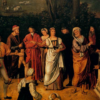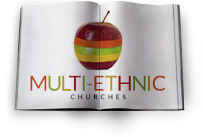The Joys and Challenges of a Multi-Ethnic Church
Rayners Lane Baptist Church (RLBC) is a multi-cultural church in a suburban multi-cultural area. Last time we counted, we had 40 different nationalities present on a Sunday. The most common are white British, Tamil (Indian and Sri Lankan), African, and Caribbean. The church is situated in the London borough of Harrow, which is now the most ethnically and religiously diverse council area in the UK.
Harrow used to be a white, middle-class suburb of NW London. Massive immigration has changed that. I have only been here for two years (and so did not witness the demographic changes within the church) but I think the following factors led to the church becoming so multi-cultural:
- A clear vision for the church as multi-cultural that is embraced by the whole church.
- The previous pastor moved to Rayners Lane from a black-majority church and brought that experience (and some Africans and Jamaicans) with him.
- Multi-culturalism is intentionally modelled from the front by getting people from different nationalities to lead services, preach, and so forth..
- Previous assistant pastors have been from differing nationalities.
It is well documented that the only area in the UK where the church is growing significantly is in London and that this is related to immigration. However, in my experience, most of this growth is still in churches with a monochrome culture. There are plenty of white, black, or brown majority churches but few that are genuinely multi-cultural. Although we have a long way to go, our aim at RLBC is to become a church of all nations for all nations. More than that, as we read Ephesians 2, we see that homogeneous churches (in multi-cultural areas) actually undermine the gospel.
THE JOYS
Ministry in a setting like this is a great joy. The melting pot of cultures brings with it such enthusiasm and dynamism. Hospitality is so important to Tamil and African cultures that it’s a wonderful antidote to Western individualism. For example, even if I visit an African family in the middle of the afternoon I must not eat lunch because I will be given a full meal regardless of whether I have already eaten!
It’s much easier to maintain a focus on world mission because everyone already has a global vision, and it’s no coincidence that we have sent out new mission partners every year for the past three years. Since most Brits are very cynical about authority, it’s refreshing that most immigrant cultures have a strong respect for leadership, where it is more readily seen as an honour and not a chore to serve in the family of God.
But the greatest joy of all is our congregation’s clear witness to the gospel. Our last baptismal service consisted of four people: an African, an Italian, a German, and a Scot—aged 20 to 80. Our next one is shaping up to be an African, a British Indian, and a white Brit. Preaching at a service like that is a piece of cake. I just point to them and say, “Only the gospel can do this!”
THE CHALLENGES
What about the challenges of a multi-ethnic church?
First and foremost, language and communication are obviously taxing. During many services the annoying whispering that can sometimes be heard is my wife translating key bits into Italian. Since the gospel is a message to be proclaimed, there is a greater scope for mistranslation. We do have a Tamil fellowship that meets on a Friday evening (where Tamil is spoken and Tamil food consumed) but we make it clear that this is more like a Home Group and is not a separate congregation. Connected with this, there are many different cultural assumptions about ecclesiology. For example, many Jamaicans grow up viewing the Baptist church almost as a “state church.” This is a great opportunity for evangelism because they see us as “their church” even if they only went to Sunday School 30 years ago. But it’s also a challenge when they arrive for “christenings” (as some Jamaican Baptists will say) or weddings.
Additionally, at the moment it feels as if our dominant culture is British and that others are welcome so long as they “do it our way.” A good example of this is our attendance at members’ meetings. It’s currently very white and not at all representative of the membership as a whole. Inevitably, there needs to be some assimilation, but we need to think more about doing it in a way that embraces aspects from immigrant cultures, too.
THE OPPORTUNITIES
As you can see, the joys and the challenges are mostly two sides of the same coin (e.g. leadership is an honour, but my motivation may be status rather than service.) We have to keep coming back to the gospel where all our cultural assumptions are challenged. And surely that can only be a good thing.








